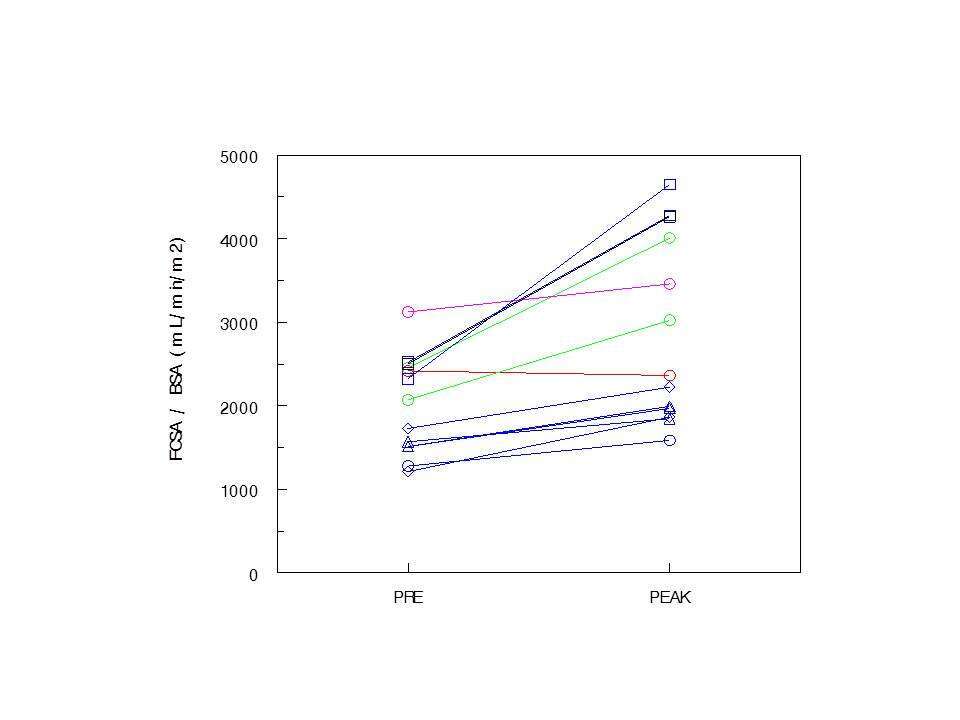Introduction: Many types of PH, particularly pulmonary arterial hypertension (PAH), cause precapillary arteriolar obstruction, leading to reduced downstream perfused microvascular bed. We proposed that the exercise limitation in PH might be from inability to increase flow through the lung bed (recruitment of microvasculature), and thus inadequate cardiac output.
Methods: We assessed the amount of functional perfused capillary surface area (FCSA) by measuring the first-pass transpulmonary metabolism of 3H-benzoyl-Phe-Ala-Pro, at rest and at peak exercise (PEAK) using a bicycle ergometer on the cath lab table. DLCO (carbon monoxide diffusing capacity) was measured. Left heart disease was defned as PAwedge < 15 mm Hg. In 13 patients, 2 had normal hemodynamics. Another patient had idiopathic PAH and one had PAH related to scleroderma. Another had PH related to obstructive sleep apnea (WHO group 3). All other patients had scleroderma.
Results: The patients exercised for a mean of 631 ± 125 SD seconds to a mean workload of 33.8 ± 7.4 Watts. Despite the small number of subjects, interesting patterns of change in functional perfused capillary surface area have appeared. The normal subjects, scleroderma patients with no PH and normal DLCO, and the patient with sleep apnea, all had normal levels of FCSA and recruit microvasculature on exercise. The patient with left heart disease had a good level of FCSA at rest, but didn`t recruit on exercise, possibly due to high postcapillary pulmonary venous pressure that would already maximally recruit in this supine individual. The IPAH patient and the scleroderma + PAH patient are unable to recruit meaningfully. Finally, scleroderma patients with either left heart disease, or no PH but a low DLCO, have a restricted vascular bed and do not recruit FCSA meaningfully.
Conclusion: Study of pulmonary microvascular vascular recruitment with exercise offers insights into the pathophysiology of various types of pulmonary hypertension.


